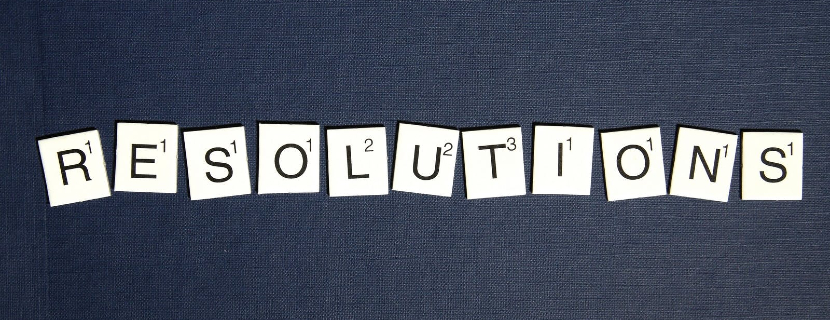What is your growth focus for 2024?
With the festive season behind us I’m sure many of us have thought of some new years’ resolutions for 2024. Now, maybe you have decided that today is as good a day as any to start or maybe you have simply decided to extend the goals you set for 2023. Whichever way, it is important for our professional growth as educators that we purposefully carve out some time in our busy lives to stop, pause and reflect on our practice.

Identifying areas for professional growth
As usual in my first session of the year with some novice teachers, I asked them to set two professional growth goals for 2024. Several of them wrote, “becoming an even better teacher” which very much resonates with me. I strongly believe that no matter how experienced we are, there is always room for growth simply because “every educator needs to improve, not because they are not good enough, but because they can be even better” (Willams).
Interestingly, when I questioned what they exactly wanted to focus on to become the best teacher-version of themselves, quite a few mentioned technology and more specifically, the use of AI in the classroom. AI can indeed have a huge impact on our practice and I also have it as one of my professional goals for 2024, but at the same time, this comment made me wonder about how this aligns with the purpose of education. The Universal Declaration of Human Rights Article 26 highlights that “education shall be directed to the full development of the human personality and to the strengthening of respect for human rights and fundamental freedoms.” So, what kind of knowledge is it that we teachers and teacher-educators need to deliver quality learning?
Before you read any further, what kind of knowledge and skills do you feel teachers and teacher educators need to be able to offer quality teaching in your context?

Key teacher knowledge areas
As a result of these discussions, we decided to explore teacher knowledge areas in more depth and after some discussion this is the short list of areas we came up with.
To be our best teacher-self we need to have an awareness and understanding of:
- the curriculum
- our subject, in this case English Language
- how language learning works
- our local teaching context and culture
- principles of good practice/ principled pedagogy
- technology
- our learners
- our self
Simply put, optimising students’ language learning does not only depend on our knowledge of the subject. It is much more complex since there are various other knowledge areas that enable us to better facilitate our students’ learning journey. The discussion led to the biggest challenges in many primary and secondary contexts, classroom management and in particular “how not to turn into an anger volcano” as one teacher put it! Thus we agreed that cognitive knowledge development, such as knowing more about, for example, using AI and how to employ it, a focus on the social and emotional aspects of teaching might be a more helpful knowledge area to explore if we want to better deal with classroom management challenges.

Developing social and emotional competences
In the communicative language classroom concepts are often developed through talking them through with others and practice often involves pair and group work. This emphasises the importance of building and maintaining relationships. And I’m sure we’ve all experienced it, relationships between the teacher and students but also amongst students themselves aren’t always plain sailing! Some students might not respond to our instructions, some students just don’t work well together to name a few. This all might lead to undesired emotions getting in the way of having those powerful positive interactions that enhance motivation, engagement and thus learning (Oxford, 2020).
Emotions are physical manifestations or responses to a situation (Barrett, 2017) and whilst some emotions such as anger, frustration and fear might be undesired in the classroom they are an important survival mechanism because they can protect us from danger. However, a disrespectful student might not be a real- life threat, but the brain does not differentiate between a lion hunting us down and a student disrespecting us! So at times our emotions triggered by student behaviour can lead to a feeling of threat causing an emotional response such as “the anger volcano”. We might for example lose our cool and end up shouting at a learner, an action we most likely don’t regard as helpful in hindsight!

Managing “the anger volcano”
Experiencing emotions is human, it is what makes us human, but I am convinced that there have been moments in my teaching and training career that could have handled my emotions differently. The big question is how can we deal with those situations where undesired emotions want to pop up and turn us into ‘the anger volcano”?
Being able to manage our emotions so they do not drive us to behave in unhelpful ways will not only improve the classroom atmosphere, it also improves our own wellbeing and provides students with an example of how to respectfully deal with emotionally challenging situations. In other words, an emotionally managed classroom starts with us, but where do we start?
Developing emotional agility
Building emotional agility can help us better manage our own emotions, allowing us to remain calm and composed in challenging situations instead of the volcano exploding! Being able to respond mindfully to our emotions can create a more stable and supportive classroom environment and improve our wellbeing (David, 2016). Below is a short activity that can help explore emotional flexibility:
Think about to a time when your anger volcano went off:
- How did your body feel? Can you describe how it felt?
- What was the emotional response? Can you label the emotion?
- What triggered this response?
- What do you think was the emotion trying to tell you?
- How did you act? Was it helpful in hindsight?
- List some more helpful ways that you could use to respond to a similar situation or behaviour in future
Next time you start to feel that the volcano is about to erupt…
- Take some deep slow breaths and silently count 5 4 3 2 1
- Name the emotions “I am feeling…. whilst walking to a different spot in the room. Accept the emotion and tell yourself ‘it’s okay to feel… “
- Instruct students to complete a task e.g. “read page x” or “do exercise on your own”
- Now imagine that emotion on a cloud passing through your blue sky
- Next respond to the situation that triggered you in a way that is more beneficial to a supportive classroom environment

Final thoughts
Teaching can be a high-stress profession, and emotional agility or flexibility can help us to better cope with the dynamic environment classrooms are. We often need to adapt to unexpected situations in class and growing our emotional flexibility allows us to navigate the -at times- emotionally charged environment of the classroom, whilst maintaining a conducive learning space for our students and taking care of our own emotional well-being.
Setting goals related to our cognitive development is invaluable, however, ensuring that we can manage our affective dimension and enable learners to do so is also essential in our communitive learning environment. When we are emotionally agile, we can create an environment where students feel safe and model to students how to manage and express their own emotions in a healthy way. So, maybe the start of 2024 is a good time to stop, pause and focus on how to further grow our affective dimension, what do you think? Remember the wise words Stevick (1980, p. 44) wrote many moons ago:
'Success depends less on materials, techniques and linguistic analysis and more on what goes on inside and between people in the classroom'.
References
Barrett, L. F., (2017) How emotions are made: the secret life of the brain. Harper
David, S. (2016). Emotional Agility: Get Unstuck, Embrace Change, and Thrive in Work and Life
Oxford, R. (2020) The well of language teacher’s emotional wellbeing.
Stevick, EW. (1980) Teaching Languages. A Way and Ways.
Wiliam, D. (2014). https://www.youtube.com/watch?v=eqRcpA5rYTE

Comments
Write a Comment
Comment Submitted